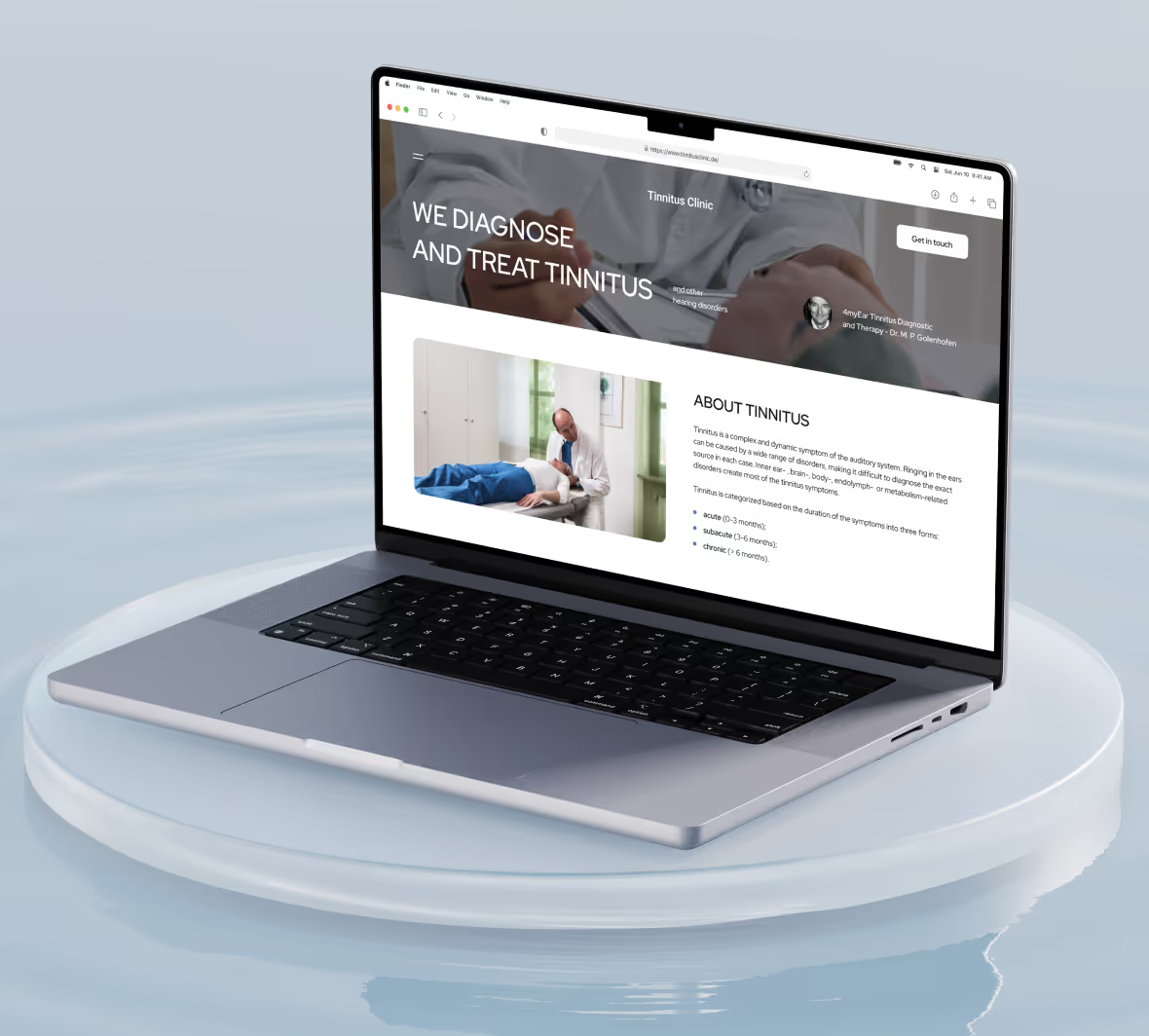
4 Pointers to Creating an MVP
When you have a new business idea, the thrill can be exhilarating. Yet, the process can feel daunting when it comes time to build it out. After all, most entrepreneurs are not coders. If you're an aspiring entrepreneur, you may need help finding a coder to help you create your product. This is where creating a Minimum Viable Product, or MVP, comes in. An MVP will help you take your idea and create a usable product that you can test with real users to help you make the product successful. Creating an MVP is challenging but can be much less stressful if you have a clear roadmap. This guide will explain how to create an MVP in four easy-to-follow steps.
Minimum Code's no-code development solutions can help you achieve your MVP goals faster and with less stress. Our team can help you create a product that meets your business goals, and we can do it quickly and efficiently using no-code development tools.
What is an MVP?
An MVP, or Minimum Viable Product, is a foundational version of a product with just enough features to satisfy early adopters and collect feedback for future development. The concept is central to the Lean Startup methodology, where the goal is to launch quickly, learn from user feedback, and iterate to improve the product. By releasing a simplified version, businesses can validate their assumptions, attract initial users, and save on costs before investing in a fully-featured product.
Define Your Core Problem and Solution
Start by identifying the primary problem your product aims to solve and the core solution it will provide. Keep the focus narrow and specific. This clarity will help ensure your MVP is lean and centered around the most crucial feature set. Ask questions like, "What is the one problem we want our product to solve?" and "What is the simplest way to solve it?"
Identify the Essential Features
To prevent scope creep, carefully select only the most necessary features required to deliver on your core value proposition. Features should be chosen based on their direct impact on solving the main problem or meeting user needs. At this stage, anything that doesn't support the product’s primary purpose can be postponed for later iterations.
Develop Quickly and Test Early
Use rapid prototyping and development methods to get your MVP into users' hands quickly. Low-code or no-code tools can be valuable for building functional MVPs, particularly if you’re testing early concepts. Testing early allows you to gather feedback from real users, ensuring your product addresses their pain points effectively and efficiently.
Gather Feedback and Iterate
The purpose of an MVP is to learn. Collect user feedback, monitor usage analytics, and identify potential friction points. Use this data to refine and prioritize new features or adjustments for future versions. This feedback loop helps ensure your product evolves in line with user needs and market demands, ultimately saving time and resources.
By following these four pointers, businesses can create an MVP that not only tests market potential but also sets a strong foundation for continuous improvement and scaling.
Related Reading
• How to Build MVP Step by Step for Startups
• Prototype vs MVP. What's The Difference?
• All You Need To Know MVP App Development
• MVP Testing
• Types of MVPs
• MVP in Scrum
• MVP Testing Methods
• Minimum Viable Product vs Prototype
• MVP in Agile
• Minimum Viable Product Examples
Define Your Core Problem and Solution
Identify Your Target Audience and Their Pain Points
Your first step in defining your MVP’s core problem is identifying your target audience and their specific pain points. Research to deeply understand who your users are and what challenges they face. This can involve surveys, interviews, or even studying competitors to pinpoint where they might fall short. This information helps you zero in on the problem your MVP will solve. For example, if your target audience is freelancers, a significant pain point could be "managing multiple projects and deadlines."
Formulate a Value Proposition
Next, formulate a value proposition to articulate how your MVP will benefit users. This statement should answer the question: What does my product do, and why does it benefit users? For instance, "This project management tool helps freelancers effortlessly track deadlines and client tasks in one simple platform."
Narrow the Focus
Finally, narrow the focus of your MVP as much as possible. This clarity helps users understand your product’s purpose and streamlines the development process. As you define your core problem and solution, aim to eliminate any unnecessary features from your MVP to keep your project on track.
With Minimum Code, you can finally bring your long-held business idea to life quickly and efficiently, without breaking the bank. Bring your long-held business ideas to life with us, get a free product discovery & scoping for your app idea today!
Identify the Essential Features
Creating a successful MVP hinges on including only the essential features that directly support your core solution. This means carefully choosing functionalities that align with your MVP’s primary purpose. By staying focused, you can avoid unnecessary complexities, get to market faster, and maximize value for your initial users.
Focus on the 80/20 Principle
The 80/20 principle, also known as the Pareto principle, is a powerful tool for feature selection. It suggests that 80% of a product's value can come from just 20% of its features. Start by listing all the possible features and then narrow down to those directly delivering the primary value you aim to offer. For example, if you’re developing an MVP for a budgeting app, you may focus on core functions like income tracking, categorizing expenses, and generating monthly summaries. Secondary features, like personalized budgeting tips or cross-device synchronization, can be considered for future releases once the core MVP has been validated.
Apply a Prioritization Framework (MoSCoW Method)
The MoSCoW method provides a structured way to categorize features, helping you focus on the essentials for the MVP launch. It breaks down features into four categories:
Must-have
These features are non-negotiable; with them, the product would function as intended. For example, a food delivery app must have options to browse food items, add items to a cart, and process payments.
Should-have
These are important but need to be more critical. They enhance the MVP but aren’t vital to its core purpose. For instance, user ratings might improve an MVP but aren’t essential for a basic delivery app to work.
Could-have
These are nice-to-have features that would be beneficial if resources allow them, but they won’t impact the core functionality of the MVP. For example, push notifications could be a "Could-have" feature in an initial food delivery app.
Won’t-have (for now)
You intentionally exclude these features from the MVP but may plan to add in future versions. Examples might be multi-language support or extensive user analytics for the food delivery MVP.
This method helps keep the MVP aligned with the primary user needs and prevents it from overloading with secondary features.
Stay Vigilant Against Feature Creep
Feature creep occurs when new features are added to a project, often due to the excitement of enhancing the product. However, too many features in an MVP can result in a diluted product experience, prolonged development, and increased costs. To guard against feature creep, ask yourself, “Does this feature directly address the core problem?” If the answer is no, consider saving it for a future iteration.
For instance, in a fitness app MVP, the essential features might be step tracking, workout logging, and basic progress tracking. Features like social sharing, workout reminders, and heart rate monitoring may sound appealing, but they aren’t critical for solving the app's core problem (tracking workouts and progress).
Build a Lean but Functional User Experience
The user experience (UX) should be lean, providing an easy-to-navigate interface that lets users achieve the product’s core purpose without complexity. This might mean choosing straightforward UI elements, simplified navigation, and easy access to essential features. By focusing on usability, you ensure that users can engage with the product without frustration, even in its early stages.
For example, an MVP for a task management app could include a simple list view to organize tasks, with options to set priorities and deadlines. More advanced features like calendar syncing or custom task views could be added later, as the basic functionality already solves the essential problem of task organization.
By zeroing in on essential features, you’ll create a streamlined MVP that is both functional and focused. This clarity accelerates development and provides an intuitive, practical product experience for early users, setting a solid foundation for future iterations.
Choosing a No-Code for Your MVP Development
We are a no-code development agency tailored for non-technical entrepreneurs looking to launch B2B SaaS or service web apps quickly. Our expertise lies in using tools like Bubble.io, Xano.com, and Webflow to deliver MVPs within a month. Why you should work with us: We offer rapid development speed, cost-effectiveness compared to traditional methods, scalable and secure solutions, and full-service support from design to post-launch. We're ideal for founders who've experienced lengthy traditional development cycles or need a technical co-founder.
Our approach solves common pain points like needing more tech skills, no-code scalability, security concerns, and the desire to focus on business while we handle the tech. With Minimum Code, you can finally bring your long-held business idea to life quickly and efficiently without breaking the bank. Bring your long-held business ideas to life with us, and get a free product discovery and scoping for your app idea today!
How To Develop a Clear User Flow
Map Out Key Actions and Pathways: The First Step to a Clear User Flow
Begin by identifying the primary actions users need to take to achieve the core goal of your MVP. For instance, if your MVP is a meal-planning app, the main steps might include creating an account, selecting dietary preferences, choosing meals, and saving a weekly meal plan. These actions should form a logical, easy-to-follow sequence, guiding the user from the initial login to achieving the app’s primary purpose.
Create a User Journey with Minimal Steps: Simplifying the User Flow
Simplify the user journey to include only the steps necessary to complete the primary task. Reducing the number of steps reduces friction, making the product more accessible. For example, in an e-commerce MVP, the user journey could be simplified to product search, adding items to a cart, and checkout. Avoid complex processes like optional account setup, detailed filtering, or advanced product recommendations at this stage; focus instead on helping users quickly navigate from product discovery to purchase.
Visualize the User Flow: Wireframes & Flow Diagrams
Visual tools like wireframes or flow diagrams provide a clear representation of each step users will take within the app. These visuals help you identify potential bottlenecks and unnecessary steps early in the design process. A simple wireframe can highlight where buttons, forms, or calls to action should be located for optimal navigation. Visualizing the flow can also ensure that each step logically connects to the next, reducing potential user confusion.
Optimize for the Core Use Case: Nailing the Primary Function
Prioritize the user flow around the most common or essential use case. For instance, if you’re building an MVP for a booking app, the primary focus should be on searching for available slots and making a booking. Other features like user reviews or recommendations can be integrated later. This focus ensures that users can immediately achieve the main objective, enhancing early satisfaction and engagement.
Test the User Flow for Friction Points: Usability Testing
Before finalizing, conduct a simple usability test to see if real users can complete the primary task smoothly. Testing with a small group allows you to see where they might encounter confusion or frustration. Gathering feedback at this stage can reveal hidden issues or unnecessary complexity in the flow, allowing you to address these areas before launch.
Gather Feedback and Iterate
Engage Your Early Users to Get the Feedback You Need
When you launch your MVP, reach out to the early adopters and encourage them to provide feedback. Use surveys, interviews, or informal conversations to collect their insights. Ask open-ended questions about their experience, what they liked, what frustrated them, and what features they feel are missing. Engaging directly with users fosters a sense of community and makes them feel valued, increasing the likelihood of honest and constructive feedback.
Track User Behavior to Guide Iteration
Use analytics tools to track user behavior within your MVP. This data can reveal patterns in how users interact with your product, which features are frequently used, and where users may be dropping off. For instance, if many users abandon their shopping carts in an e-commerce MVP, it may indicate issues with the checkout process that must be addressed. Monitoring metrics like user retention, conversion rates, and feature engagement helps pinpoint areas that require refinement.
Analyze Feedback for Common Themes
Gather all user feedback and analyze it for common themes and patterns. Group similar comments together to identify recurring issues or requests. This analysis will help prioritize which features or fixes to address first based on user needs. For example, if multiple users struggle to navigate your app, you might prioritize redesigning the user interface over adding new features.
Implement Iterations Based on Insights
Once you have a clear understanding of user feedback and behavior, prioritize changes that will enhance the user experience and address the most significant pain points. This iterative approach allows you to make incremental improvements directly responding to user needs. For instance, if users find a specific feature confusing, consider simplifying it or providing additional guidance within the app. Aim for regular updates based on user feedback to keep your MVP relevant and user-friendly.
Maintain Open Communication with Your Users
Keep users informed about the changes and improvements you’re making based on their feedback. This transparency not only builds trust but also encourages ongoing engagement. Consider sharing release notes or updates about new features or fixes that result from their input. Creating a feedback loop—where users see their feedback has led to meaningful changes—reinforces their connection to your product and motivates them to continue using and promoting it.
Plan for Future Enhancements Based on Feedback
After refining your MVP, plan for future features and enhancements based on feedback. Consider creating a roadmap that outlines upcoming updates based on user requests and business goals. This strategic planning ensures that you continue to evolve the product in ways that add value for users while maintaining the focus on the core problem you set out to solve.
Get a Free Product Discovery & Scoping for Your App Idea Today
No-code platforms like Bubble.io, Xano.com, and Webflow are becoming famous for building MVPs. They allow you to quickly validate your business ideas without writing code. No-code MVP development is significantly faster than traditional methods. What’s more, no-code tools are scalable. This means you can use them to build your MVP and grow and evolve your project on the same platform as you attract more users. In short, no-code lets you focus on your business instead of the tech.
We are a no-code development agency tailored for non-technical entrepreneurs looking to launch B2B SaaS or service web apps quickly. Our expertise lies in using tools like Bubble.io, Xano.com, and Webflow to deliver MVPs within a month. Why you should work with us: We offer rapid development speed, cost-effectiveness compared to traditional methods, scalable and secure solutions, and full-service support from design to post-launch. We're ideal for founders who've experienced lengthy traditional development cycles or need a technical co-founder.
Our approach solves common pain points like needing more tech skills, no-code scalability, security concerns, and the desire to focus on business while we handle the tech. With Minimum Code, you can finally bring your long-held business idea to life quickly and efficiently without breaking the bank. Bring your long-held business ideas to life with us, and get a free product discovery and scoping for your app idea today!
Related Reading
• MVP Tools
• Lean Startup MVP
• MVP Validation
• MVP Timeline
• No Code Agencies
• Launching an MVP
• MVP Development Team

Ready to build your product?







